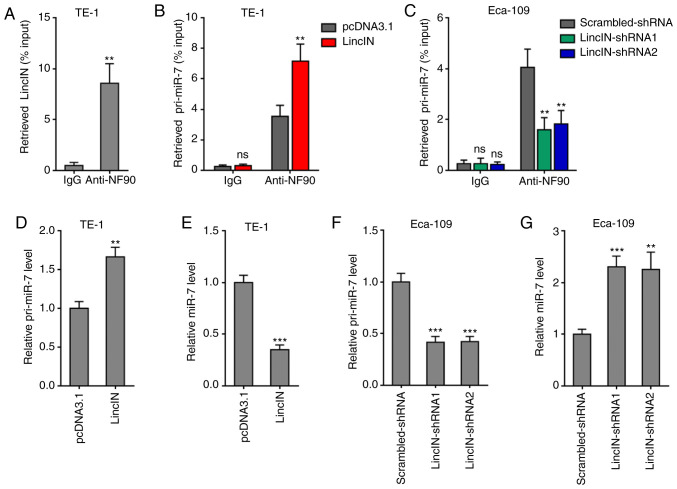Figure 4.
LincIN enhances the suppressive effects of NF90 on miR-7 biogenesis. (A) RIP assays were performed using the TE-1 cells, followed by RT-qPCR to detect LincIN expression associated with NF90. (B) RIP assays were performed in TE-1 cells transiently overexpressing LincIN or the control, followed by RT-qPCR to detect pri-miR-7 associated with NF90. (C) RIP assays were performed in Eca-109 cells transiently depleting LincIN or control, followed by RT-qPCR to detect pri-miR-7 expression associated with NF90. (D) Expression of pri-miR-7 in LincIN stably overexpressing and control TE-1 cells detected by RT-qPCR. (E) Expression of miR-7 in LincIN stably overexpressing and control TE-1 cells detected by RT-qPCR. (F) Expression of pri-miR-7 in LincIN stably depleted and control Eca-109 cells detected by RT-qPCR. (G) Expression of miR-7 in LincIN stably depleted and control Eca-109 cells detected by RT-qPCR. Results are shown as the means ± SD from 3 separated experiments. **P<0.01, ***P<0.001, vs. vs. IgG, control, or control-shRNA group; ns, not significant, determined by the Student's t-test (A, B, D and E) or one-way ANOVA followed by Dunnett's multiple comparisons test (C, F and G). ESCC, esophageal squamous cell carcinoma.

